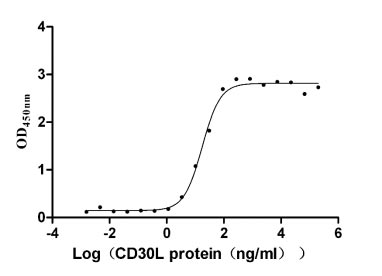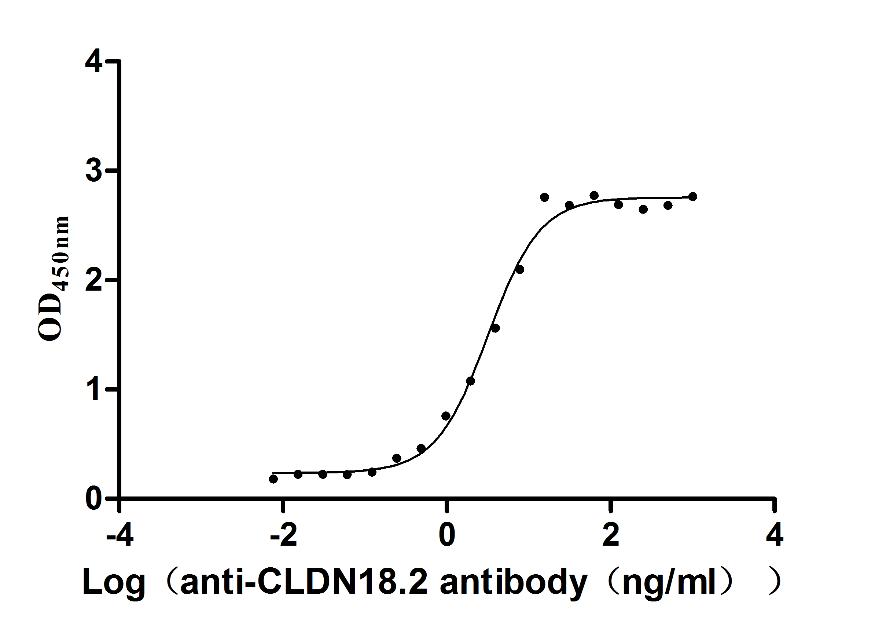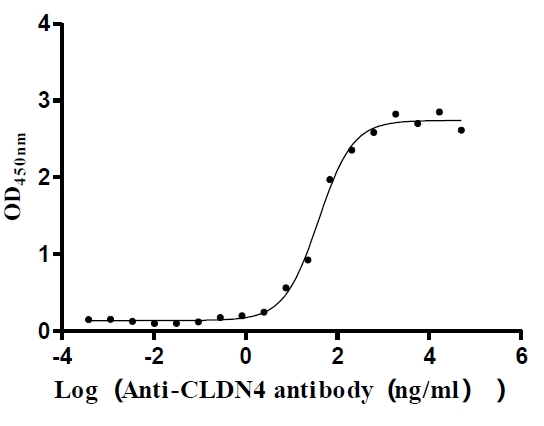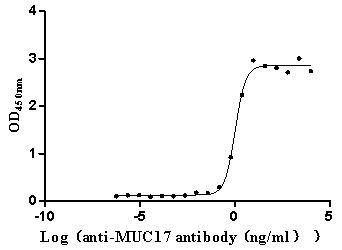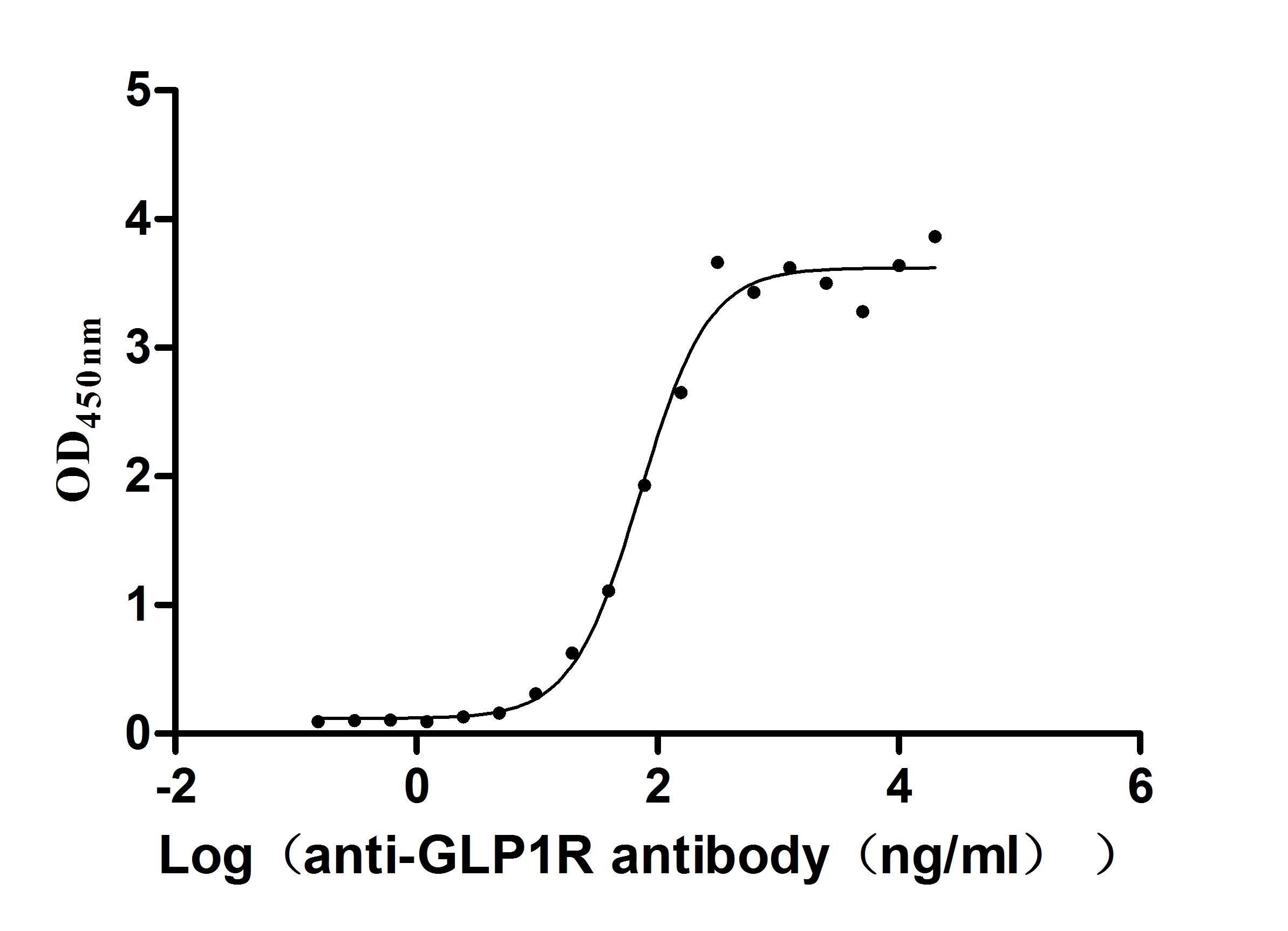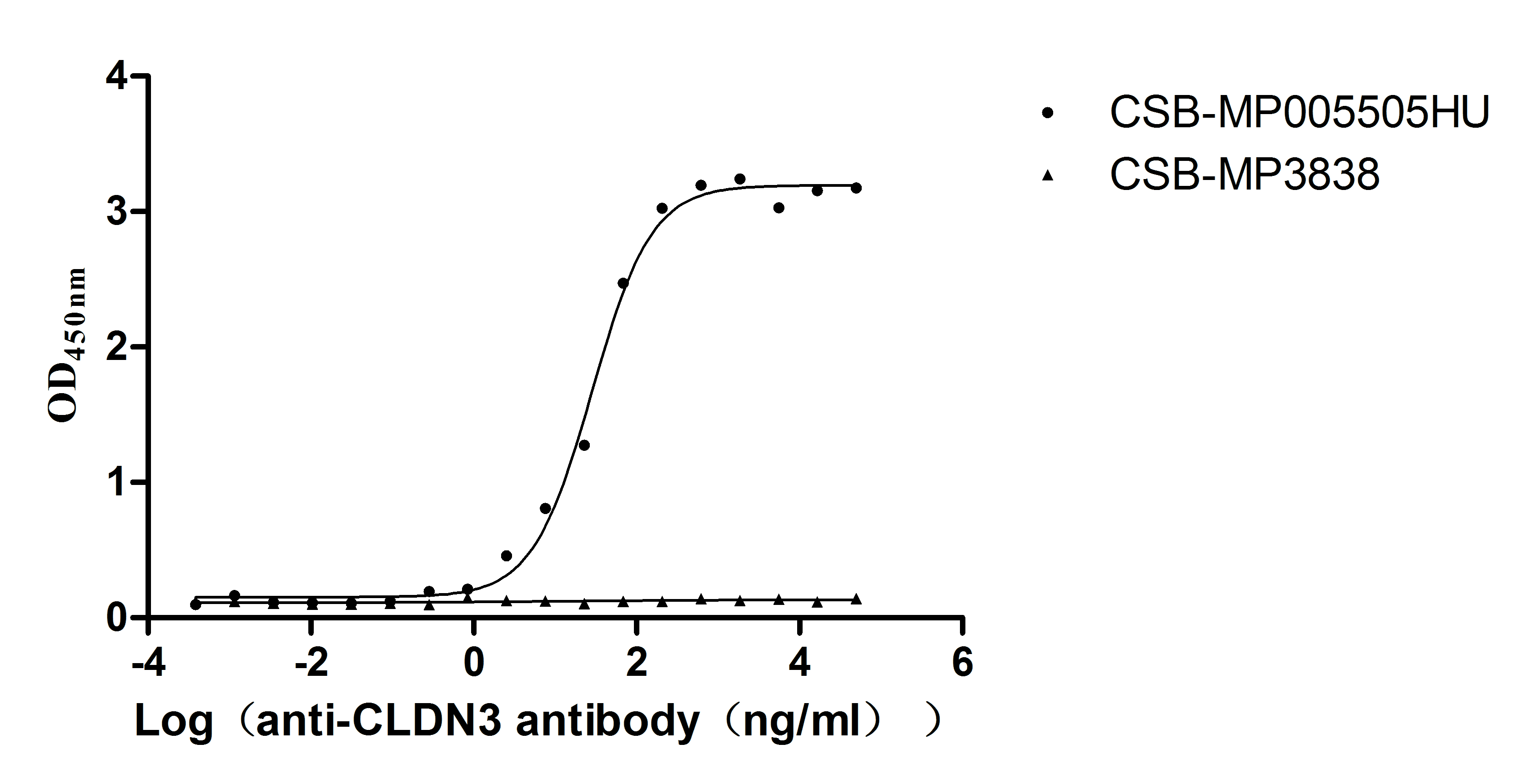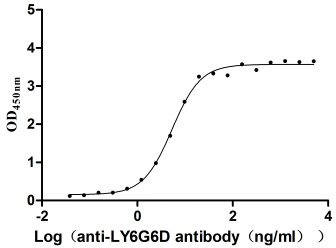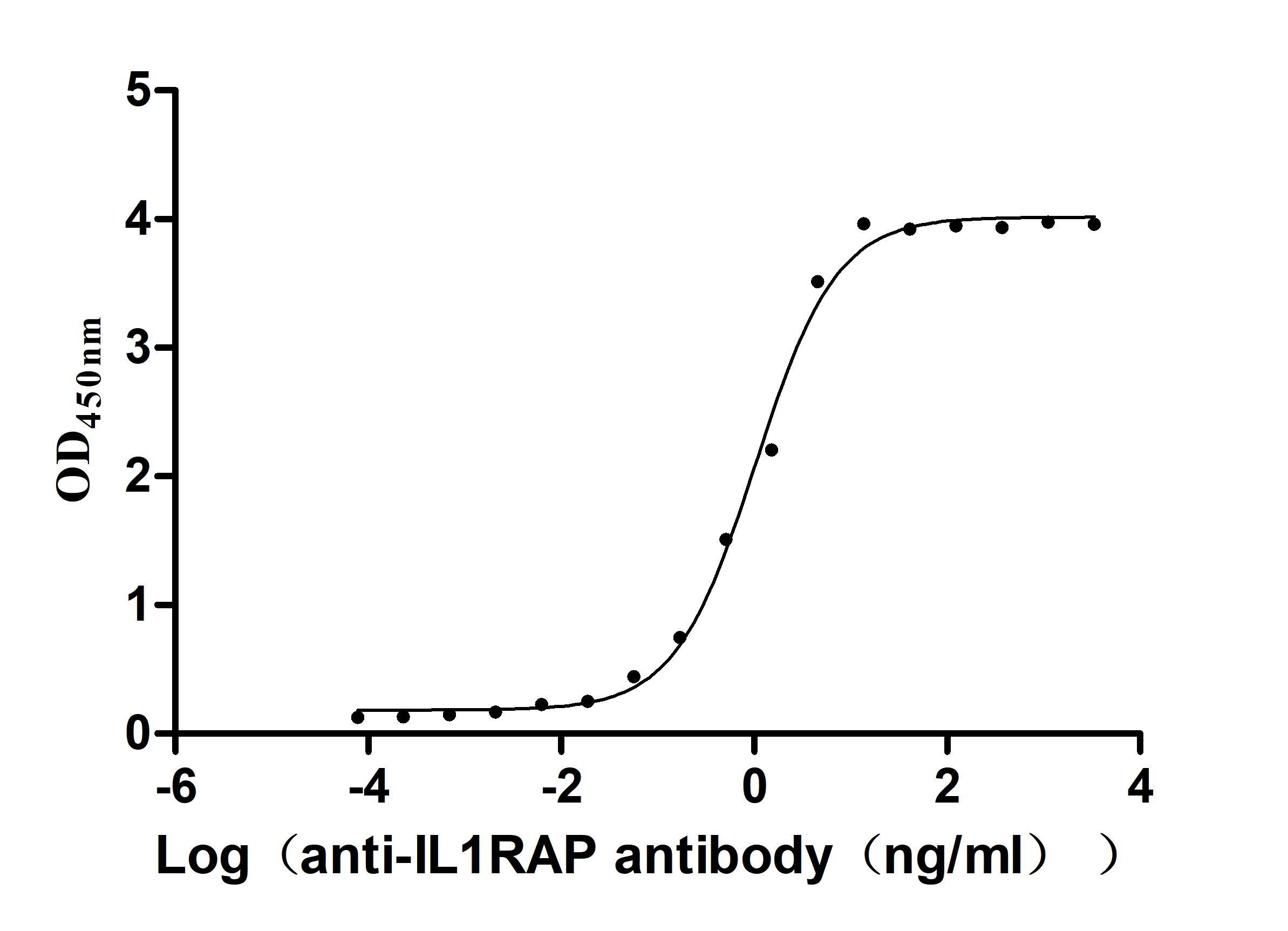Recombinant Drosophila melanogaster Brain tumor protein (brat), partial
-
中文名称:Recombinant Drosophila melanogaster Brain tumor protein(brat),partial
-
货号:CSB-EP839760DLU
-
规格:¥1836
-
图片:
-
其他:
产品详情
-
纯度:Greater than 85% as determined by SDS-PAGE.
-
生物活性:Not Test
-
基因名:brat
-
Uniprot No.:
-
种属:Drosophila melanogaster (Fruit fly)
-
蛋白长度:Partial
-
来源:E.coli
-
分子量:26
-
表达区域:294-487aa
-
氨基酸序列QANSQEQQREDSIYGSLHPQQQQQQQQQQQRQLFCPRHKQELLKFSCRTCCILVCKECIVLEHSTGLHELENVQSPGMTTSTGSTANESALQTLLADMRGKIGEIVGIAGNSDQNLTKVKLQYQKAHNELNETHQFFASMLDERKTELLKELETLYTAKVNSNNSWQQRSRDLIDKGLATCEAVERSPAPPSSL
Note: The complete sequence including tag sequence, target protein sequence and linker sequence could be provided upon request. -
蛋白标签:N-terminal 6xHis-tagged
-
产品提供形式:Liquid or Lyophilized powder
Note: We will preferentially ship the format that we have in stock, however, if you have any special requirement for the format, please remark your requirement when placing the order, we will prepare according to your demand. -
缓冲液:If the delivery form is liquid, the default storage buffer is Tris/PBS-based buffer, 5%-50% glycerol. If the delivery form is lyophilized powder, the buffer before lyophilization is Tris/PBS-based buffer, 6% Trehalose.
-
复溶:We recommend that this vial be briefly centrifuged prior to opening to bring the contents to the bottom. Please reconstitute protein in deionized sterile water to a concentration of 0.1-1.0 mg/mL.We recommend to add 5-50% of glycerol (final concentration) and aliquot for long-term storage at -20℃/-80℃. Our default final concentration of glycerol is 50%. Customers could use it as reference.
-
储存条件:Store at -20°C/-80°C upon receipt, aliquoting is necessary for mutiple use. Avoid repeated freeze-thaw cycles.
-
保质期:The shelf life is related to many factors, storage state, buffer ingredients, storage temperature and the stability of the protein itself.
Generally, the shelf life of liquid form is 6 months at -20°C/-80°C. The shelf life of lyophilized form is 12 months at -20°C/-80°C. -
货期:Delivery time may differ from different purchasing way or location, please kindly consult your local distributors for specific delivery time.
-
注意事项:Repeated freezing and thawing is not recommended. Store working aliquots at 4℃ for up to one week.
-
Datasheet & COA:Please contact us to get it.
相关产品
靶点详情
-
功能:A NHL-domain family protein that functions a translational repressor to inhibit cell proliferation. Plays a central role in translation repression of hb mRNA by being recruited by nos and pum to the Nanos Response Element (NRE), a 16 bp sequence in the hb mRNA 3'-UTR. Probably recruited by other proteins to repress translation of other mRNAs in other tissues. Involved in the regulation of ribosomal RNA synthesis and cell growth. Participates in abdominal segmentation and imaginal disk development. During neuroblast division, segregates asymmetrically and inhibits self-renewal of one of the two daughter cells. Together with the asymmetrically segregating transcription factor prospero ensures that the daughter cell will stop growing, exit the cell cycle, and differentiate into neurons possibly by modulating the function of dm in ganglion mother cells (GMC). Restrics developmental potential of type II intermediary neuronal progenitor (INP) cells playing a role in proliferation and maturation of the neuroblasts.
-
基因功能参考文献:
- Combinatorial control of messenger RNAs by Pumilio, Nanos and Brain Tumor proteins has been described. PMID: 28318367
- Data suggest that brain tumor protein (Brat) promotes midline crossing through directing the localization or stability of Adenomatous polyposis coli-2 (Apc2) at the plus ends of microtubules in navigating commissural axons. PMID: 29617376
- results support a novel role for Brat/TRIM3 in maintaining stem cell equilibrium and suppressing tumor growth by regulating NICD nuclear transport PMID: 26893479
- BRAT is a prominent post-transcriptional regulator in the early embryo through mechanisms that are largely independent of PUM. PMID: 25962635
- that Brat represses the translation of src64B, an upstream regulator of a conserved Rho-dependent pathway previously shown to promote axon retraction PMID: 25297111
- the Brat-dependent mechanism extinguishes the function of the self-renewal factor Klu in the presumptive intermediate progenitor cell by attenuating Arm activity, balancing stem cell maintenance and progenitor cell specification. PMID: 24257623
- These results together reveal an important and previously unidentified role for Brat in synaptic development and endocytosis mediated by suppression of BMP signaling. PMID: 23884941
- Cofactors Brain Tumor and eIF4E Homologous Protein are not obligatory for Pumilio and Nanos activity. PMID: 22064486
- Brain Tumor (Brat) was identified as a potent differentiation factor and target of Pum-Nos regulation. PMID: 21238926
- We show that Drosophila larval neuroblasts-stem cell-like precursors of the adult brain-regulate proliferation by segregating the growth inhibitor Brat and the transcription factor Prospero into only one daughter cell. PMID: 16564014
- Results suggest that the tumour suppressor brat negatively regulates cell proliferation during larval brain development in Drosophila, and that Prospero acts as a key downstream effector of brat in cell fate specification and proliferation control. PMID: 16774999
显示更多
收起更多
-
亚细胞定位:Cytoplasm. Cytoplasm, cell cortex.
-
组织特异性:Expressed during embryogenesis, mainly in nervous tissues. Expressed in the embryonic central and peripheral nervous systems including the embryonic brain. In third instar larva it is expressed in the larval central nervous system including the brain and
-
数据库链接:
Most popular with customers
-
Recombinant Human Tumor necrosis factor receptor superfamily member 8 (TNFRSF8), partial (Active)
Express system: Mammalian cell
Species: Homo sapiens (Human)
-
Recombinant Macaca fascicularis Claudin 18.2 (CLDN18.2)-VLPs (Active)
Express system: Mammalian cell
Species: Macaca fascicularis (Crab-eating macaque) (Cynomolgus monkey)
-
Recombinant Human Claudin-4 (CLDN4)-VLPs (Active)
Express system: Mammalian cell
Species: Homo sapiens (Human)
-
Recombinant Human Mucin-17 (MUC17), partial (Active)
Express system: Mammalian cell
Species: Homo sapiens (Human)
-
Recombinant Human Glucagon-like peptide 1 receptor (GLP1R), partial (Active)
Express system: Mammalian cell
Species: Homo sapiens (Human)
-
Recombinant Human Claudin-3 (CLDN3)-VLPs (Active)
Express system: Mammalian cell
Species: Homo sapiens (Human)
-
Recombinant Macaca fascicularis lymphocyte antigen 6 family member G6D (LY6G6D) (Active)
Express system: Yeast
Species: Macaca fascicularis (Crab-eating macaque) (Cynomolgus monkey)
-
Recombinant Macaca fascicularis Interleukin 1 receptor accessory protein(IL1RAP), partial (Active)
Express system: Mammalian cell
Species: Macaca fascicularis (Crab-eating macaque) (Cynomolgus monkey)



